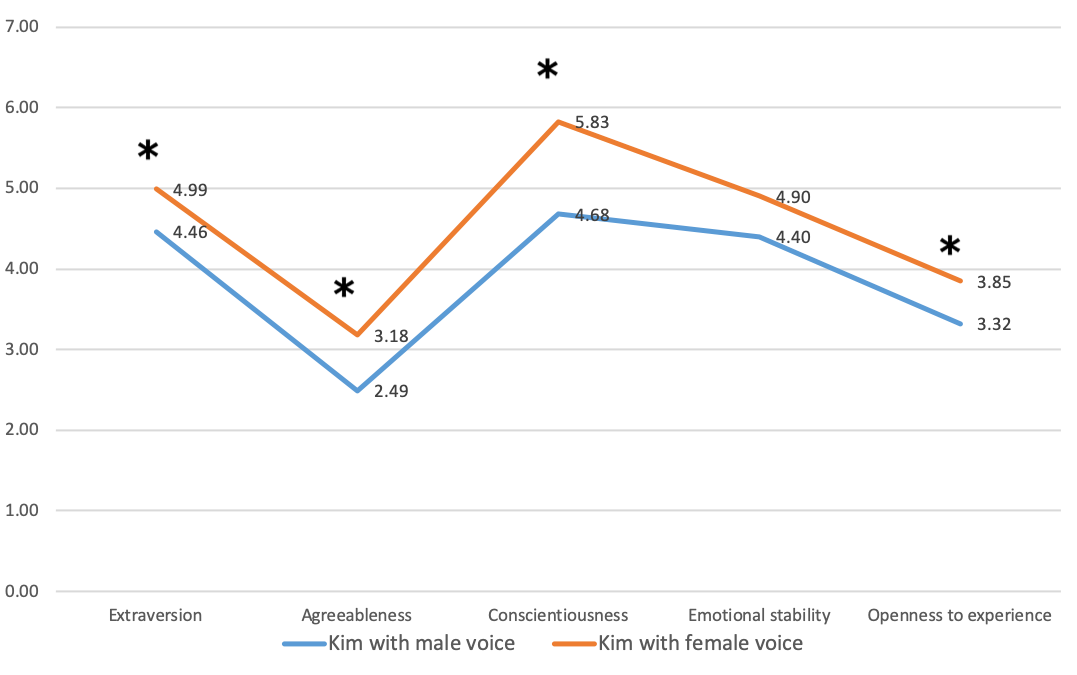Personality Factors
| ||||||
| gender_personality_and_stereotypes_case_-_english.pdf |
Recording and Morphing
Before recording the scripts, we first trialed a number of voices to see which responded best to voice morphing. The dialogue was the recorded in a studio using two actors specifically chosen for their voice quality. We used Avid Pro Tools HD 12.0.0 to record the actors and then edited each voice with the same software. Pitch shifting was processed manually with X-Form (rendered only) using Elastic Audio properties in Pro Tools. The resultant two versions were produced (see below):
Before recording the scripts, we first trialed a number of voices to see which responded best to voice morphing. The dialogue was the recorded in a studio using two actors specifically chosen for their voice quality. We used Avid Pro Tools HD 12.0.0 to record the actors and then edited each voice with the same software. Pitch shifting was processed manually with X-Form (rendered only) using Elastic Audio properties in Pro Tools. The resultant two versions were produced (see below):
|
Version A: Kim (the confident person) is Female (original)
|
Version B: Kim (the confident person) is male (manipulated)
|
Presenting and Conducting the Case
This case was contextualised as an exercise in Personality Psychology, where the students believed they were taking part in an exercise aimed at highlighting different methods for measuring personality factors and social behavior.
This case was contextualised as an exercise in Personality Psychology, where the students believed they were taking part in an exercise aimed at highlighting different methods for measuring personality factors and social behavior.

Want to try?
If you want to try out the case with your own class use QR-code is link below for a ready package.
https://www.surveymonkey.com/r/FVDNGLF
Note! Contact [email protected] if you want to do this with a group so that we can set up a specific group for you and give you access to the results.
If you want to try out the case with your own class use QR-code is link below for a ready package.
https://www.surveymonkey.com/r/FVDNGLF
Note! Contact [email protected] if you want to do this with a group so that we can set up a specific group for you and give you access to the results.

Link to post-survey. Please let participants answer this after the seminar discussion!
https://www.surveymonkey.com/r/R7N92JX
https://www.surveymonkey.com/r/R7N92JX
Click here to edit.
Some Results from Previous Trials

Figure 1. Mean scores for the sub-scales of the Ten-Item Personality Inventory for Group 1 (Student A rated with a male voice) and Group 2 (Student A rated with a female voice). (N=101, * p < .05)
The stereotypes that have emerged from the awareness raising activities suggest that the perceived gender of an interlocutor, as signaled by voice quality, will affect the listener’s ratings of personality factors as well as their ratings of social behavior. More specifically Student A with a male voice was perceived as less extraverted, less agreeable, less conscientious, and less open to experience that Student A with a female voice. Moreover the Sudent A with a masculine voice was interpreted as showing less positive affective behaviors and more negative affective behaviors toward the other speaker than was the speaker with a feminine voice.